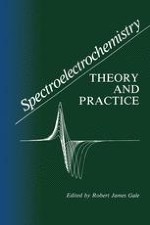1988 | Buch
Über dieses Buch
The intention of this monograph has been to assimilate key practical and theoretical aspects of those spectroelectrochemical techniques likely to become routine aids to electrochemical research and analysis. Many new methods for interphasial studies have been and are being developed. Accordingly, this book is restricted in scope primarily to in situ methods for studying metal! electrolyte or semiconductor! electrolyte systems; moreover, it is far from inclusive of the spectroelectrochemical techniques that have been devised. However, it is hoped that the practical descriptions provided are sufficiently explicit to encourage and enable the newcomer to establish the experimental facilities needed for a particular problem. The chapters in this text have been written by international authorities in their particular specialties. Each chapter is broadly organized to review the origins and historical background of the field, to provide sufficiently detailed theory for graduate student comprehension, to describe the practical design and experimental methodology, and to detail some representative application examples. Since publication of Volume 9 of the Advances in Electrochemistry and Electrochemical Engineering series (1973), a volume devoted specifically to spectroelectrochemistry, there has been unabated growth of these fields. A number of international symposia-such as those held at Snowmass, Colorado, in 1978, the proceedings of which were published by North-Holland (1980); at Logan, Utah in 1982, published by Elsevier (1983); or at the Fritz Haber Institute in 1986-have served as forums for the discussion of nontraditional methods to study interphases and as means for the dissemination of a diversity of specialist research papers.
Anzeige
